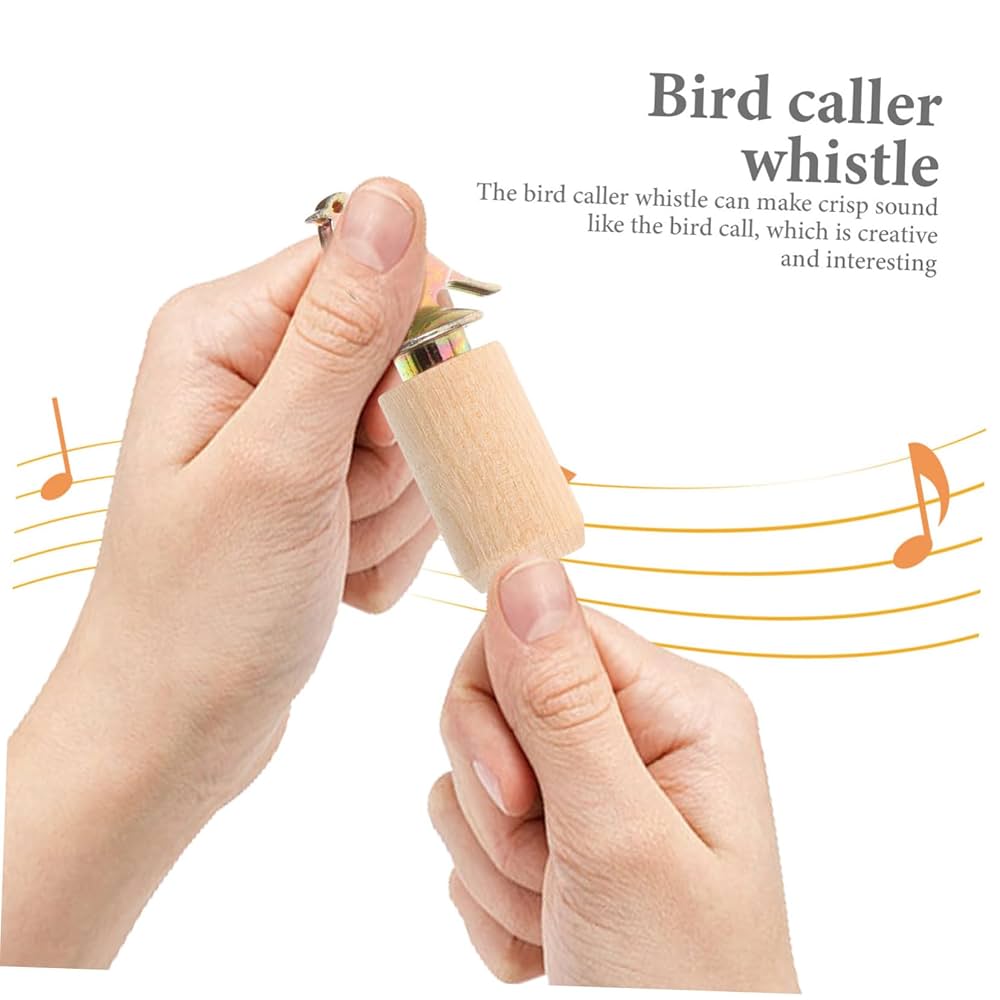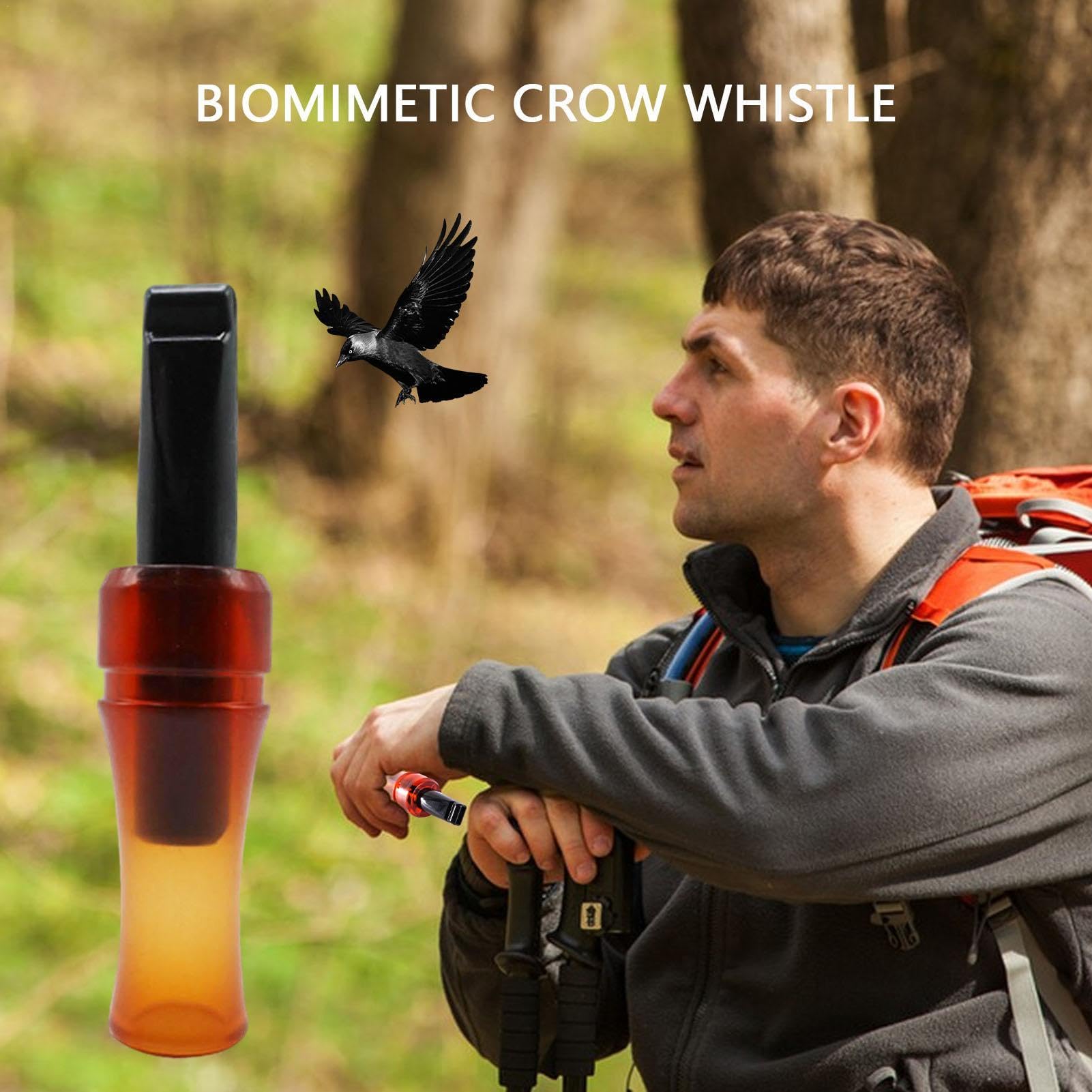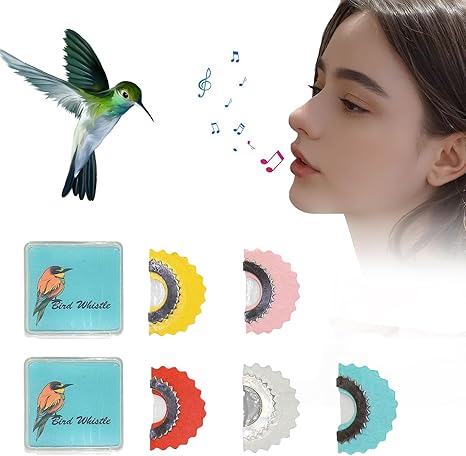Have you ever wanted to speak the language of birds? Learning how to bird call whistle can open up a whole new way to connect with nature.
Imagine standing in the woods and hearing a bird respond to your whistle—it’s an amazing feeling. You’ll discover simple, step-by-step tips to master bird call whistling quickly. Whether you’re a beginner or just curious, you’ll find easy tricks that make it fun and rewarding.
Keep reading, and soon you’ll be charming birds with your own whistle!

Credit: www.amazon.co.uk
Basics Of Bird Call Whistling
Bird call whistling is the art of copying bird sounds using your mouth or a whistle. It helps bird watchers and nature lovers communicate with birds.
Learning the basics makes it easier to attract birds or enjoy their songs. It takes practice and the right techniques.
Types Of Bird Calls
Birds use different calls for many reasons like warning, mating, or finding food. Each call has a unique sound.
- Contact Calls: Short sounds to keep in touch with others.
- Alarm Calls: Loud sounds to warn of danger.
- Song Calls: Complex sounds used to attract mates.
- Flight Calls: Sounds made during flying.
Whistling Techniques
Good whistling needs control of breath and tongue. Small changes can make big sound differences.
Practice these techniques to improve:
- Use your lips to shape the whistle.
- Control airflow by adjusting your breath.
- Move your tongue to change pitch and tone.
- Practice short and long whistles for different calls.
Choosing The Right Whistle
There are many whistles made for bird calls. Pick one that fits your needs and skill level.
Consider these points when choosing a whistle:
- Material: Plastic or metal affect sound quality.
- Size: Smaller whistles are easier to carry.
- Sound Range: Some whistles mimic certain birds better.
- Ease of Use: Pick a whistle that feels comfortable.
Preparing Your Voice And Breath
Bird call whistling needs control of your voice and breathing. Good preparation helps you create clear sounds.
Practice breathing and mouth movements to improve your whistle. These skills let you copy bird calls better.
Breathing Exercises
Strong breath supports steady whistling. Practice deep breathing to control your airflow.
Try breathing exercises daily to build lung strength and control your breath while whistling.
- Breathe in slowly through your nose for 4 seconds
- Hold your breath for 2 seconds
- Exhale slowly through your mouth for 6 seconds
- Repeat this 5 times
Pitch Control
Pitch control helps match the sounds of different birds. Change your breath speed to adjust pitch.
Practice whistling high and low notes by changing how fast the air moves from your mouth.
- Blow air gently for low sounds
- Blow air faster for high sounds
- Practice sliding between high and low pitches
- Use a piano or app to check your pitch
Lip And Tongue Positioning
Your lips and tongue shape the whistle sound. Keep your lips tight but relaxed to start.
Move your tongue to change the tone and style of the bird call you want to copy.
- Form a small opening with your lips
- Place your tongue near the roof of your mouth
- Use your tongue tip to block and release air
- Experiment with lip and tongue positions to find clear sounds
Learning Common Bird Calls
Bird calls help you understand nature better. They let you know which birds are nearby.
Whistling bird calls can attract birds or help you identify them. Start with easy sounds and grow your skills.
Simple Calls For Beginners
Begin with basic bird calls that are easy to whistle. These calls are short and clear.
- The “chip” call sounds like a quick “chip-chip”.
- The “peep” call is a soft, high-pitched whistle.
- The “tweet” call mimics a light, short whistle.
- Practice these sounds daily to build confidence.
Mimicking Songbirds
Songbirds have beautiful and complex calls. Try copying their rhythm and tone.
| Bird | Call Description | How to Whistle |
| Northern Cardinal | Clear, loud whistle | Whistle two notes rising |
| American Robin | Cheerful, repeating phrases | Whistle short, repeated sequences |
| House Finch | Soft warbling sounds | Mix short trills with whistles |
Advanced Bird Sounds
Advanced calls include trills, warbles, and complex patterns. These need practice and patience.
Try this exercise for warbling sounds:
- Take a deep breath.
- Use your tongue to create quick note changes.
- Practice making smooth rises and falls in pitch.
- Record yourself and compare to real bird calls.

Credit: www.amazon.com
Practicing In Nature
Practicing bird call whistles outdoors helps you connect with birds. It also improves your skills faster. Nature offers the best space to hear and mimic bird sounds.
Spending time in natural settings makes your whistle practice more real. You learn to adjust your sound for different environments and bird types.
Finding Ideal Locations
Look for quiet places with many birds. Parks, forests, and lakesides are good choices. Avoid noisy areas like busy streets or crowded parks.
- Choose spots with varied trees and bushes
- Visit early in the morning or late afternoon
- Find open spaces near water sources
- Pick places where birds often gather or feed
Timing Your Whistles
Timing is key to getting bird attention. Birds are most active at dawn and dusk. Whistling during these times increases chances of a response.
- Start softly to avoid scaring birds
- Pause between whistles to listen carefully
- Repeat calls with slight changes in pitch
- Watch bird activity and adjust your timing
Observing Bird Responses
Watching how birds react helps you learn what works. Some birds may come closer, while others might sing back. Note the differences.
| Bird Response | What It Means |
| Bird approaches | Curious or friendly |
| Bird sings back | Communication or territory call |
| Bird flies away | Disturbed or scared |
| No response | Bird not interested or not present |
Tips To Improve Your Skills
Learning to bird call whistle takes time and practice. Using the right tips can help you improve faster.
This guide shares useful advice to help you get better at bird call whistling.
Recording And Playback
Record your bird calls to hear how you sound. Play them back to spot mistakes and areas to improve.
- Use a clear, quiet place for recording.
- Play your recordings on different devices to check sound quality.
- Compare your calls with real bird sounds.
- Keep a folder of recordings to track your progress.
Joining Bird Whistling Groups
Joining groups helps you learn from others and stay motivated. You can share tips and get feedback.
| Group Type | Benefits |
|---|---|
| Local Clubs | Meet in person, practice together |
| Online Forums | Share recordings, ask questions anytime |
| Social Media Groups | Find tips, watch tutorials, meet experts |
Staying Patient And Consistent
Improvement takes time. Practice regularly and be patient with yourself.
- Set a daily practice time, even if it is just 10 minutes.
- Focus on small improvements each day.
- Take breaks to avoid frustration.
- Celebrate progress, no matter how small.

Credit: us.amazon.com
Impressing Others With Bird Calls
Learning to whistle bird calls can be fun and surprising. You can catch attention and make new friends outdoors.
This skill connects you to nature and helps you share your passion with others. Here are ways to impress with bird call whistles.
Showcasing At Outdoor Events
Outdoor events like picnics or hikes are great places to share bird calls. You can entertain and educate people around you.
- Pick common bird calls that many recognize.
- Practice your whistle to sound clear and true.
- Invite others to guess the bird you are calling.
- Explain interesting facts about each bird.
- Keep your calls at a gentle volume to avoid disturbing wildlife.
Sharing On Social Media
Social media lets you show your bird call skills to a big audience. You can post videos and teach others.
- Record short clips with clear audio.
- Add captions with bird names and call descriptions.
- Use natural settings for your videos.
- Encourage followers to try bird whistling.
- Respond to comments and questions.
Inspiring Nature Appreciation
Bird calls spark curiosity and respect for wildlife. You help others notice the small wonders around them.
| Benefit | How Bird Calls Help |
| Awareness | People listen closely to nature sounds. |
| Learning | Bird calls teach about species and habits. |
| Connection | Whistling brings people closer to the outdoors. |
| Relaxation | Natural sounds calm the mind and body. |
Frequently Asked Questions
How Do I Start Learning Bird Call Whistling?
Begin by listening closely to bird calls in your area. Practice mimicking simple calls using a whistle or your mouth. Consistent daily practice improves accuracy and helps you recognize different bird sounds quickly.
What Tools Help Improve Bird Call Whistling Skills?
A good quality whistle and a bird call guide app are essential. Recording your attempts helps track progress. Using slow playback of bird calls aids in learning complex sounds effectively.
Can Bird Call Whistling Attract Specific Bird Species?
Yes, accurate bird call whistling can attract certain species. It mimics their communication signals and curiosity. However, overuse or incorrect calls may confuse or repel birds instead of attracting them.
How Long Does It Take To Master Bird Call Whistling?
Mastering bird call whistling varies by individual. With regular practice, basic calls can be learned in weeks. Complex calls and perfect pitch may take months to achieve proficiency.
Conclusion
Mastering the bird call whistle can bring you closer to nature. It’s a fun skill that lets you connect with birds. Practice regularly to improve your sound and technique. Listen to real birds for better mimicry. Remember, patience is key.
Don’t rush the process. Enjoy each step. Soon, you’ll be whistling like a pro! Share your progress with friends and family. Inspire others to try it too. Whistling can be a joyful hobby for all ages. Keep exploring and have fun with your new skill.
Happy whistling!

